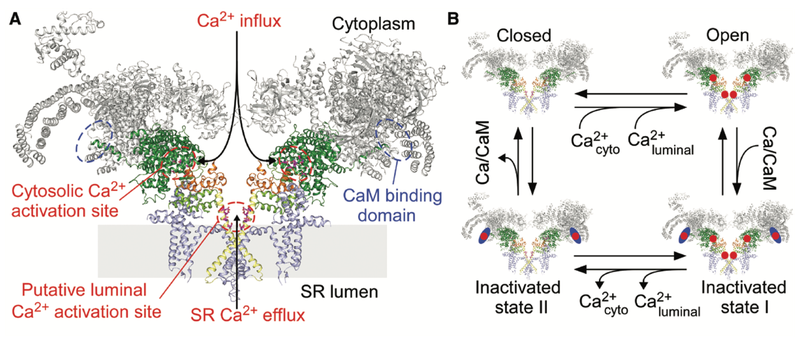Important results published on a molecular mechanism that causes a type of serious cardiac arrhythmia
Mar 24, 2021
Blas Echebarria and Enric Àlvarez, researchers in the Physics department of the research group in Computational Biology and Complex Systems (BIOCOM-SC), together with researchers from the Heart Rate Analysis and Control (ANCORA) research group at the UPC, and other international scientists have identified one of the molecular mechanisms responsible for cardiac alternation. This is an alteration of the heart rhythm that facilitates the induction of ventricular fibrillation, a potentially lethal type of arrhythmia. This discovery, published in the journal Circulation Research (AHA Jounals), opens the door to new pharmacological treatments.
Cardiovascular disease is one of the leading causes of death worldwide, accounting for about 18 million deaths each year. In Spain, and in Catalonia, they represent almost a third of the deaths. Diseases that also cause a significant decrease in quality of life. Now, an international team of researchers, led by Professor SR Wayne Chen of the University of Calgary (Canada), and formed by the Heart Rate and Contraction of the Institut d'Investigacions Biomèdiques de Barcelona (IIBB-CSIC) and of the Institut d’Investigació de l'Hospital de la Santa Creu i Sant Pau (IIB Sant Pau), and the research groups in Biologia Computacional i Sistemes Complexos (BIOCOM-SC) and Anàlisi i Control del Ritme Cardíac (ANCORA) from the Universitat Politècnica de Catalunya · BarcelonaTech (UPC), have identified one of the molecular mechanisms responsible for cardiac alternation, an alteration of the heart rhythm that facilitates the induction of ventricular fibrillation, a potentially lethal arrhythmia.
The research group BIOCOM-SC of the UPC has been using computational models for some time to study the origin of cardiac alternations. Thanks to different multidisciplinary collaborations, he has managed to develop computational techniques that allow him to study different physiological scenarios that explain his origin. Professor SR Wayne Chen of the University of Calgary, and one of the leading experts on the rianodine receptor, proposed that this alteration in receptor function could be due to its binding to another protein (calmodulin or CaM), which regulates its function. To confirm this, Professor Chen designed an experiment, with the help of researcher Hove-Madsen: to change the function of CaM by introducing into adenovirus mice modified to produce either the protein in its normal state or mutations in the protein that increased or decreased their function, observing whether this decreased or increased the propensity to develop alternates.
Experimentally, however, it is not possible to observe what happens with RYR, so there is always the possibility that CaM is affecting another regulatory mechanism, and that there is an alternative explanation for this effect. To confirm whether the effect of CaM on RYR is responsible for this change, researchers in the BIOCOM-SC research group have used a computational model that describes in detail the interaction between CaM and RYR and its effect on cardiac dynamics. The results of the mathematical model agree perfectly with what is observed experimentally.
For more details on the research done see the news published by the UPC news published by the UPC or the scientific article:
Ca2+-CaM Dependent Inactivation of RyR2 Underlies Ca2+ Alternans in Intact Heart'. Circulation Research. 2021 Volume 128, Issue 4: e63–e83, originally published December 30, 2020

Share: